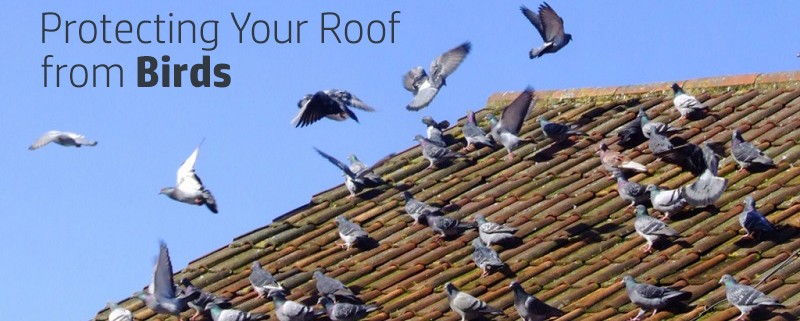Home: Protecting Your Roof from Birds
David M. Piterski from A&H Forensic Roofing in Cary shares some risks and damage birds can cause to your roof.
Cary, NC — You can ask any roofer, and they will tell you – birds can create serious risk and damage when they come near your home’s roof. While we usually associate roof damage with storms or leaks, birds can also create a world of trouble.
Protect Your Roof From…
Here are the top types of damage birds can do to your roof and why you should be alert.
Bird Droppings
We should talk about bird droppings. While they might look unattractive and unsightly on your shingles, the real danger they present is significantly more permanent. Bird droppings are exceptionally acidic, which implies that they can easily burn away protective coating – causing the shingles on your roof to lose granules and twist.

In a worst case scenario, this acid will allow moisture and water to seep beneath the top layer of your roof, where it can cause lots of serious damage. It is not much of a surprise that pigeons, starlings and other flocks that are comfortable around the house are usually the main culprits here.
Bird droppings can be really hard to spot if you are not looking for them. They are also very hard to remove. If you end up having serious damage to your roof from bird droppings, the best solution is to replace your shingles.
That doesn’t mean that you should wait, though – you can prevent that kind of a problem from happening. The first thing you should do is to make sure that there are no overhanging branches on your roof, because birds will likely sit on them. Also, you can even use linings and gutters specifically made to discourage birds from sitting on your roof.
Bird Nests
Water Damage & Fires
You may ask yourself, “What do attic condensation and fires have in common?” Well, for starters, they are both caused by birds nests. Birds usually nest wherever they want in places that are, usually, unconventional. If some bird decides to build its nest in your roof vent, you’re in trouble. Having a nest in your vent will block the air flow from your attic.
This leads to water vapor building up until it condenses on attic surfaces like support beams. Moisture can cause you serious damage, and it will most likely rot your support beams.
Birds can also nest on a heating vent or on a chimney. This can lead to problems with smoke and fires, and dreaded carbon monoxide backflow can occur. That is why it is a good idea to check those things to make sure they are nest free, especially during the colder months. If you happen to find a bird nest in your heating vent or a chimney, just remove them.
They are easily removed, and you can even install covers to protect your vents.
Gutter Damage
Quick, where do you usually see bird nests? Where do birds usually build them around houses? That’s right, in your gutters. Having a nest in your gutter can cause serious problems. Debris from nests can clog your gutters.
This leads to two serious problems. The first problem with clogged gutters is that that the water buildup can damage your roof edge and any surrounding materials. The second problem is that during the rain, gutters will fill with water and that can add a massive weight on them, causing structural damage. Which leads us to next risk…
Woodpeckers – The Bird Itself!
Last but not least, how about we address woodpeckers? While woodpeckers do peck trees in search for bugs, roof damage is more likely brought on by male woodpeckers that have found a surface to make really loud noises to attract females.
Often, this surface is probably your chimney or a vent. Luckily, a male woodpecker is unlikely to bring about as much damage by just “singing” as he is doing different things. If a woodpecker is really digging into your roof materials to search for the bugs, that can lead to much more serious problems.
Conclusion
So, to conclude, it is highly recommendable to often check your vents, your chimney and your gutters for bird nests – and the bird droppings and birds that come with them.
Detecting and disposing of them in time can save you a lot of trouble and a lot of money.
Story by David M. Piterski from A&H Forensic Roofing in Cary. Photo by Les Chatfield.



